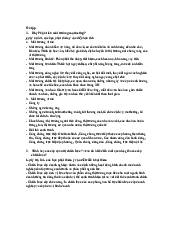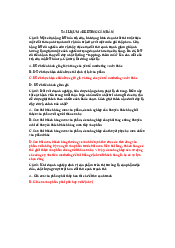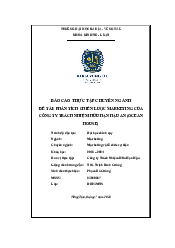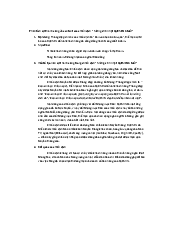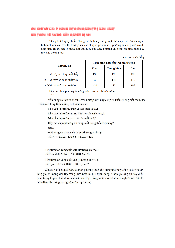

Preview text:
Billions of US 35
VN Trade Balances on Goods and Services dollar 30 25 20 15 10 5 -5 -10 -15 -20 The Balances of Goods
The exhibition presents the two major component of Vietnam current account for 2005-2023, Good and
service and investment income. You may see that the figure hightlight the amount of good trade deficit from
beginning 2005 to end of 2010. From 2011 to 2021 Vietnam has a rapid economic recovery that is
expected to reach 2020 (about 30708 billion USD). These activities come from imports and
exports. However, due to the severe impact of the Covid-19 pandemic, the surplus in 2021 will
decrease by more than 42% compared to 2020. And there are signs of recovery in 2022.In
contract, Vietnam's service balance is always in deficit but on a small scale because the value of
import and export of services is much smaller than the value of goods. As you can see that, the
line of trade of service tend to decrease from 2005-2019. Especially, The Covid-19 pandemic has
seriously affected Vietnam's service exports and reduced the value of service exports more than 5
times (from -2,351 billion in 2019 to -15667 billion dollar). 2)
-From 2005-2008, Foreign investments in Vietnam have decreased significantly because of the
impact of the recession economic. The line direct investment has tended to decrese over the year as
Vietnamese investors have invested abroad with a total value of nearly 3.2 billion USD in the
period 2016 – 2021 that lead to deficit FDI in Viet Nam. Unlike the stability in DI, the balance of
foreign indirect investment (PI) in Vietnam has relatively large fluctuations. During the period
2016 - 2021, Vietnam received about 7billion USD of net foreign PI capital. However, this period
witnessed the withdrawal of PI capital from Vietnamese residents back to the country, although the
value was still small. The total value of PI capital that Vietnamese investors withdrew to the
country during the entire period was 194 million USD, mainly concentrated in 2016 with a total value of 187 million USD.
